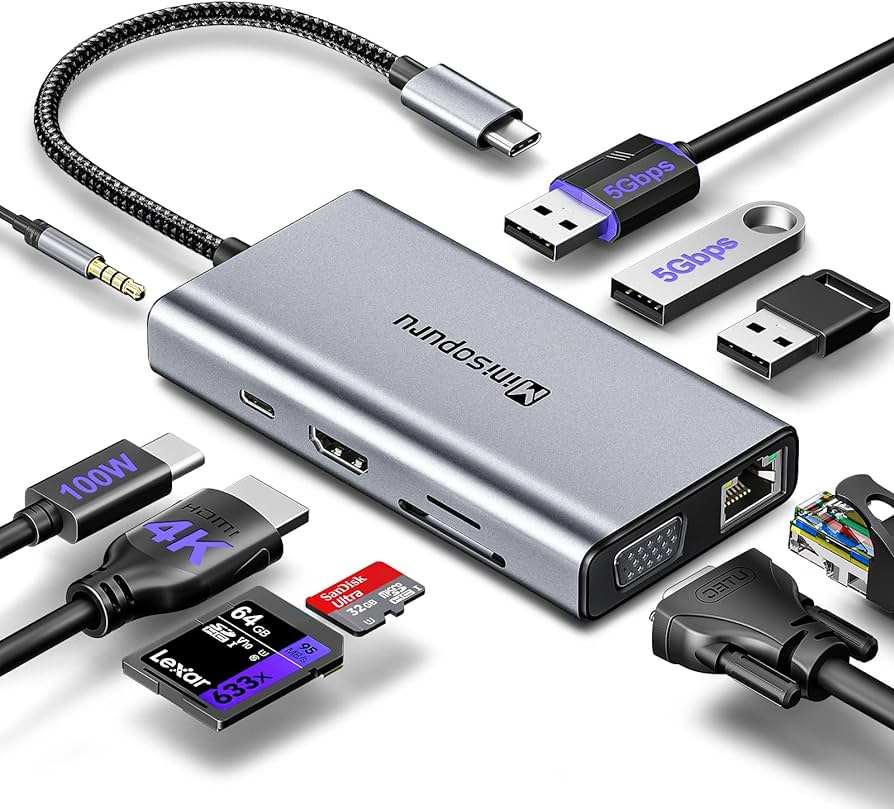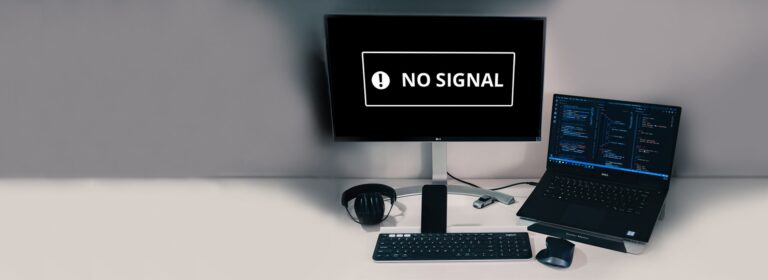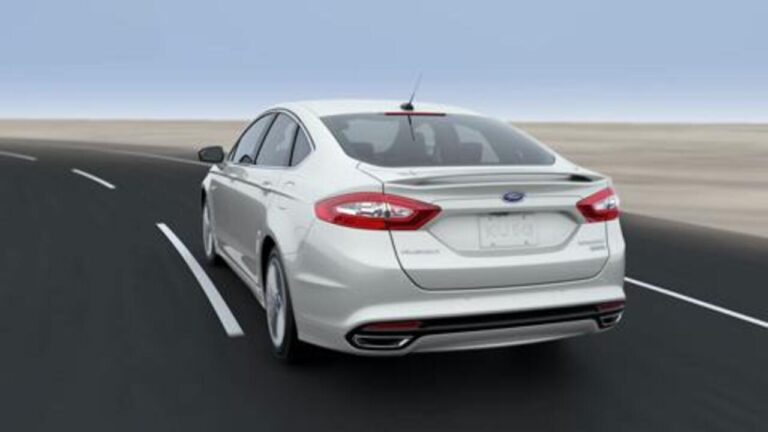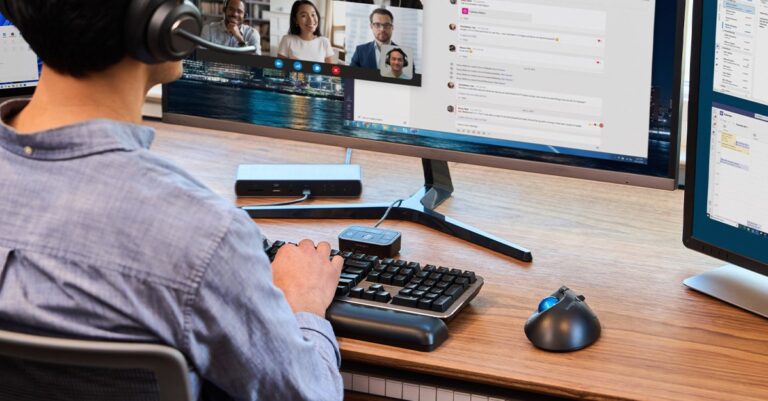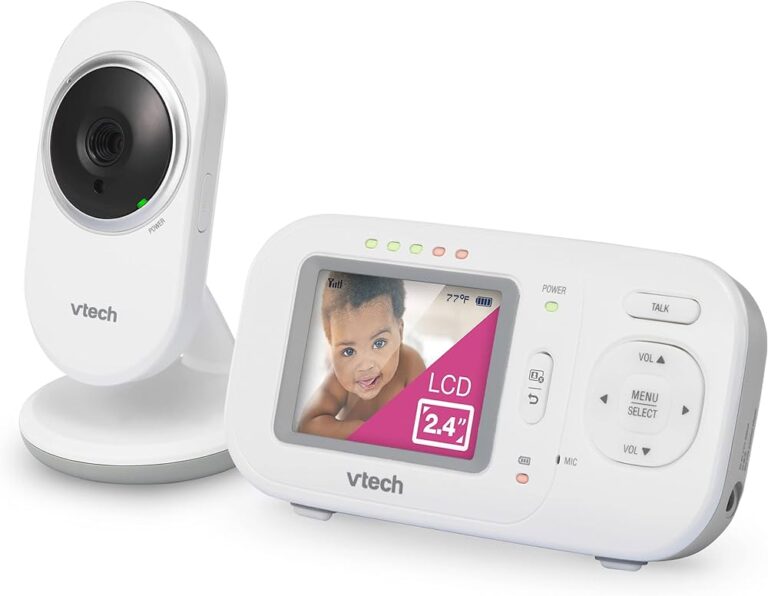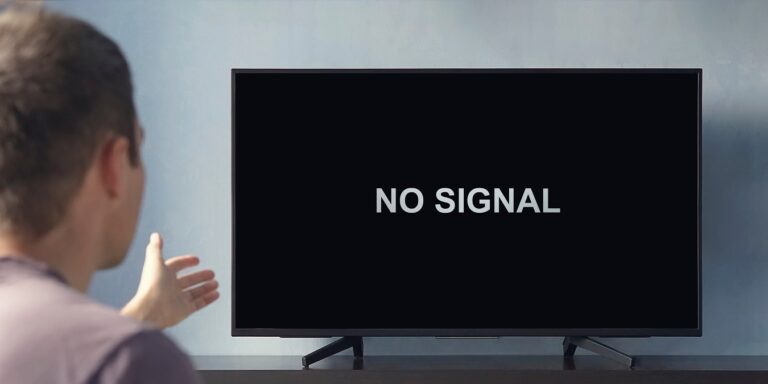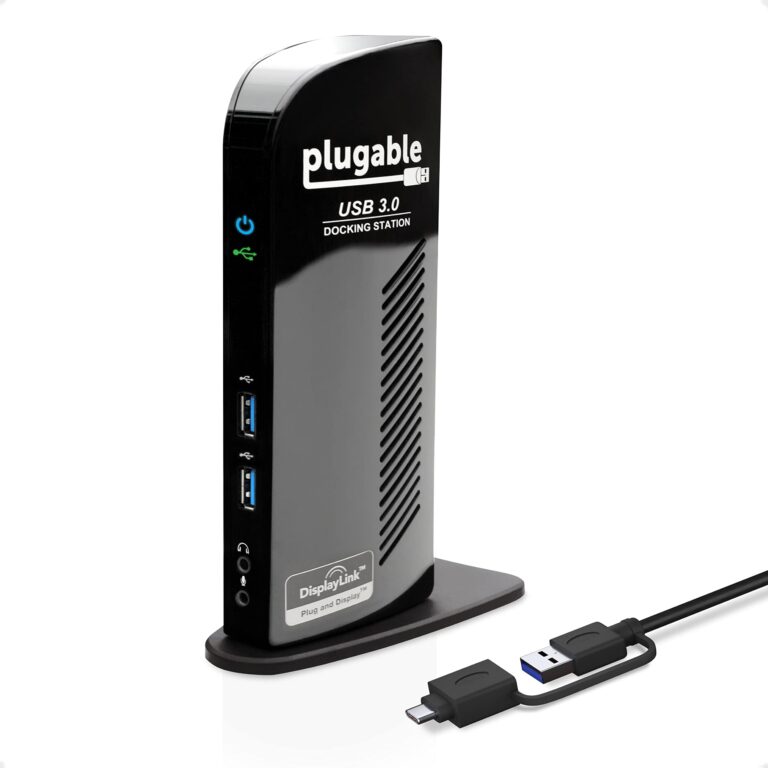Hdmi Laptop to Vga Monitor Not Working? Try These Power Solutions!
If your HDMI laptop to VGA monitor connection is not working, ensure that the adapter is receiving power from an external power source, either through USB or mini USB. However, some newer adapters may not require an external power source.
It is important to check this to troubleshoot the issue effectively.
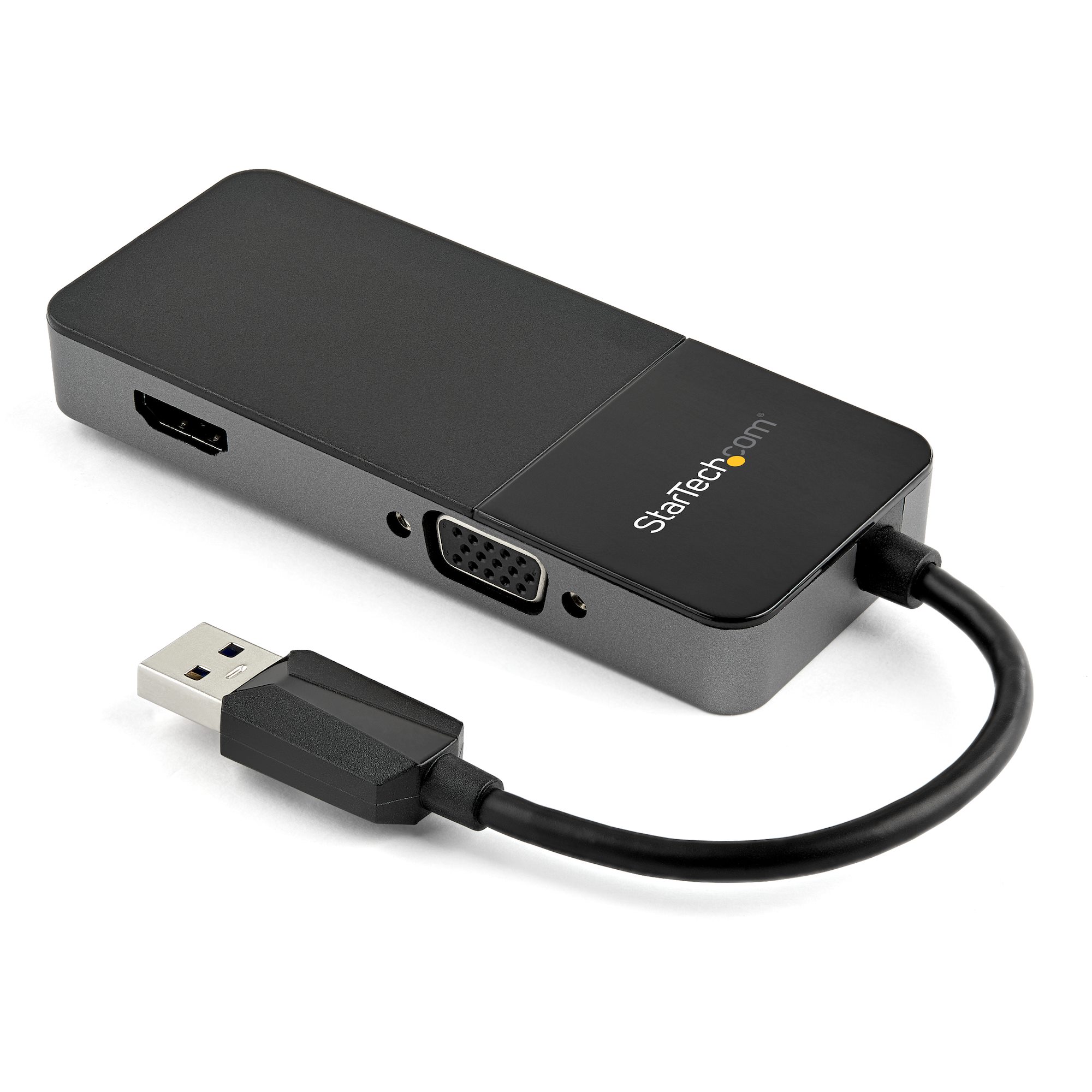
Credit: www.startech.com
Hdmi To Vga Connection Challenges
Having trouble with your HDMI laptop not connecting to your VGA monitor? Make sure you provide the HDMI to VGA adapter with the necessary power source through USB or mini USB. Alternatively, consider using the latest adapters that don’t require external power.
Understanding The Conversion Process
When it comes to connecting a laptop with an HDMI port to a VGA monitor, challenges may arise. The conversion from HDMI to VGA requires the use of an adapter to translate the digital HDMI signal into an analog VGA signal. This conversion process involves various steps and factors that need to be considered to ensure a successful connection.Importance Of Correct Adapter Type
One crucial factor in the HDMI to VGA connection is using the correct adapter type. It is essential to choose an active adapter that can decode the HDMI signal and produce an equivalent VGA signal. HDMI and VGA are completely incompatible on their own, so an active adapter is necessary to bridge the gap between the two. Using a passive adapter or a simple cable will not work for this type of conversion.Ensuring Each H3 Heading Adheres To Html Syntax
Understanding The Conversion Process
Importance Of Correct Adapter Type
Troubleshooting Hdmi Laptop To Vga Monitor Issues
Having trouble with your HDMI laptop not working with your VGA monitor? Make sure you’re supplying the adapter with an external power source. Alternatively, consider using the correct HDMI to VGA adapter for a seamless connection.
H3: Troubleshooting HDMI Laptop to VGA Monitor Issues Introduction: If you’re experiencing difficulties with your HDMI laptop to VGA monitor connection, troubleshooting the issue is essential. In this guide, we will explore common problems and solutions to help you get your setup working seamlessly. H3: Checking Connection Integrity To begin troubleshooting your HDMI laptop to VGA monitor issues, it’s important to start by checking the integrity of your connections. Here’s what you need to do: 1. Ensure Proper Cable Connection: – Verify that your HDMI cable is securely plugged into both your laptop’s HDMI port and the HDMI-to-VGA adapter. – Double-check that the VGA cable is firmly connected to the adapter and the monitor’s VGA port. 2. Verify Power Supply: – Confirm that the HDMI-to-VGA adapter is receiving power. Some adapters require an external power source, which is supplied through a USB or mini USB connection. – If your adapter doesn’t require external power, ensure that it’s receiving power through the HDMI connection. 3. Troubleshoot Power Problems: – If you’re experiencing power issues with the adapter, check if the external power supply is working correctly. – Try switching out the USB cable or mini USB cable connected to the adapter with a different one to rule out any issues with the cable itself. H3: Selecting the Appropriate Input Source Another crucial aspect of troubleshooting your HDMI laptop to VGA monitor issues is selecting the correct input source. Follow these steps: 1. Adjust Monitor Input: – On your monitor, press the input/source button (sometimes labeled as “Source” or “Input”). – Cycle through the available input options until you find the one that corresponds to your VGA connection. 2. Check Laptop Display Settings: – On your laptop, right-click on the desktop and select “Display Settings.” – In the display settings menu, ensure that the VGA monitor is detected and set as the primary or secondary display, based on your preference. – If the VGA monitor is not detected, click on “Detect” to let your laptop search for additional displays. 3. Test with Another Source: – Connect the HDMI laptop to a different monitor or TV using the same HDMI cable and HDMI-to-VGA adapter. – If the second monitor displays the laptop’s screen correctly, then the issue might be with the VGA monitor itself or its compatibility with the adapter. By systematically troubleshooting these connection and input issues, you can often resolve HDMI laptop to VGA monitor problems easily. If the issue persists, it may be necessary to consult a professional or contact the manufacturer for further assistance. Remember, ensuring a strong and reliable connection between your laptop and monitor is essential for a smooth and efficient workflow.Power Solutions For Hdmi And Vga Compatibility
If your HDMI laptop to VGA monitor is not working, one possible reason is that the adapter might not be receiving enough power. Ensure that you have connected the adapter to an external power source. However, with the latest adapters, an external power source is not required.
When it comes to connecting your HDMI laptop to a VGA monitor, one of the common issues that users face is the HDMI to VGA adapter not working. This can be quite frustrating, but one of the key factors to consider in resolving this problem is ensuring that the adapter is receiving adequate power.
External Power Requirements For Adapters
Most HDMI to VGA adapters require an external power source to function properly. This power is typically obtained through a USB or mini USB connection. It is important to check if your adapter requires external power and ensure that it is connected to the appropriate power source. Without adequate power, the adapter may not be able to convert the HDMI signal to VGA effectively.
Ensuring Adequate Power Supply To The Adapter
To ensure that the adapter receives sufficient power, follow these steps:
- Check if your adapter comes with an external power cable or USB connection. Connect it to a power source.
- Make sure the power source is functioning properly. Try using a different USB port or power outlet to rule out any issues with the power supply.
- Ensure that the power cable is securely connected to the adapter and the power source. Loose connections can result in power fluctuations, affecting the performance of the adapter.
- If your adapter does not require an external power source, ensure that your HDMI laptop is providing sufficient power to the adapter.
By adhering to these power solutions and ensuring that your HDMI to VGA adapter receives adequate power, you can troubleshoot and resolve any issues with the compatibility between your laptop and monitor.
Adapter Not Detected: Power Diagnostics
If your HDMI laptop to VGA monitor is not working, the first thing to check is whether the adapter is getting sufficient power. Ensure that the adapter is connected to an external power source, usually through USB or mini USB.
However, newer adapters may not require an external power source.
Inspecting Power Source And Cables
To diagnose why your HDMI laptop to VGA monitor setup is not working and the adapter is not being detected, it is important to inspect the power source and cables. Here are some steps you can take to ensure proper power diagnostics: 1. Check the power source: Ensure that the adapter is receiving power from an external source. Most HDMI to VGA adapters require external power to function properly. This power is usually supplied through a USB or mini USB connection. Make sure the adapter is connected to a power source using the appropriate cable. 2. Examine the cables: Inspect the HDMI and VGA cables for any visible damage or loose connections. A faulty cable can prevent the adapter from working properly. If you notice any signs of wear or damage, consider replacing the cables to troubleshoot the issue. 3. Ensure proper cable connection: Verify that the HDMI cable is securely connected to your laptop’s HDMI port and the VGA cable is properly inserted into the VGA port on your monitor. Sometimes, a loose or improperly connected cable can cause the adapter not to be detected. 4. Test with a different power source: If you suspect that the power source might be the issue, try connecting the adapter to a different USB port or using a different power adapter altogether. This can help determine if the problem lies with the power source.Signs Of Adapter Receiving Power
When troubleshooting the “Adapter Not Detected” issue, it is important to look for signs that the adapter is receiving power. Here are some indications that the adapter is getting the necessary power supply: 1. LED indicator: Many HDMI to VGA adapters feature an LED indicator light that turns on when the adapter is connected to power. Check if the LED light on the adapter is lit, as this indicates that power is reaching the device. 2. Device recognition: If your laptop recognizes the adapter when it is connected, it is a good sign that the adapter is receiving power. Check if your laptop displays a notification or detects the presence of an external display when the adapter is plugged in. 3. Audible feedback: Some adapters emit a slight buzzing or humming sound when they are powered on. Listen for any audible feedback coming from the adapter, as this can indicate that it is receiving the necessary power supply. 4. Monitor response: After connecting the adapter to your laptop and monitor, observe if the monitor displays any activity or shows signs of receiving a signal. A responsive monitor suggests that the adapter is functioning and receiving power. By inspecting the power source and cables, as well as looking for signs of the adapter receiving power, you can effectively troubleshoot why your HDMI laptop to VGA monitor setup is not working. Remember to carefully check all connections and test with different power sources or cables if necessary.Hdmi To Vga Adapter Woes And Resolutions
When it comes to connecting a modern HDMI laptop to a VGA monitor, many users experience frustration when their setup doesn’t work as expected. HDMI to VGA adapter compatibility and functionality can be a complex matter. In this article, we will address common adapter failures and provide tactics for reviving non-responsive adapters.
H3identifying Common Adapter Failures/h3
One of the most common reasons for HDMI to VGA adapter failure is related to power issues. It is crucial to ensure that the adapter is receiving the necessary power. Some older adapters require an external power source, which can be supplied through USB or mini USB. However, the latest adapters available in the market don’t usually require this external power source.
Another common issue is the direction of the cable itself. HDMI to VGA adapters are designed for converting HDMI signals to VGA signals, not the other way around. If you have a VGA to HDMI cable, it will not work when trying to connect your laptop’s HDMI port to a VGA monitor.
Additionally, faulty or damaged ports can also cause adapter failure. Make sure to inspect both the HDMI port on your laptop and the VGA port on your monitor for any signs of damage or debris that may hinder a proper connection.
H3tactics For Reviving Non-responsive Adapters/h3
If you find yourself with a non-responsive HDMI to VGA adapter, there are a few tactics you can try to revive it:
- Double-check the cable connections: Ensure that both ends of the adapter are securely connected to their respective ports on your laptop and monitor. Sometimes a loose connection can cause malfunctions.
- Restart your computer: A simple restart can often resolve minor glitches that may be causing the adapter to not function properly.
- Try a different HDMI port: If your laptop has multiple HDMI ports, try connecting the adapter to a different port to rule out the possibility of a faulty port.
- Update drivers or firmware: Check for any available updates for your laptop’s graphics card drivers or firmware that may improve compatibility with the HDMI to VGA adapter.
- Test with another adapter or computer: If possible, try using the HDMI to VGA adapter with a different computer or test it with a different adapter. This will help determine whether the issue lies with the adapter or your specific laptop.
By following these troubleshooting tactics, you can increase the chances of resolving any issues you may encounter with your HDMI to VGA adapter.
When Hdmi Laptop To Vga Monitor Fails
Connecting an HDMI laptop to a VGA monitor can sometimes be a frustrating experience. Many users encounter issues where the connection fails or the display is not working properly. In this section, we will discuss common problems and provide alternative connections and solutions to help you resolve the issue. We will also share tips for preventing future adapter issues, ensuring a seamless connection between your HDMI laptop and VGA monitor.
Alternative Connections And Solutions
If you are facing difficulties with the HDMI to VGA connection, there are alternative options you can consider:
- Use a VGA to HDMI adapter: Connecting the VGA cable directly to a VGA to HDMI adapter can help overcome compatibility issues. This adapter will convert the VGA signal into HDMI, allowing you to connect it to your laptop.
- Try a different cable: Sometimes, the issue may be due to a faulty cable. Switching to a different HDMI or VGA cable and ensuring they are securely connected can help resolve the problem.
- Use a docking station: Docking stations provide multiple connectivity options, including VGA ports. Connecting your laptop to a docking station with a VGA output can be an effective way to connect it to a VGA monitor.
By trying these alternative connections, you may be able to overcome the HDMI to VGA connection failure and establish a successful connection between your laptop and monitor.
Tips For Preventing Future Adapter Issues
To ensure a smooth and error-free HDMI to VGA connection in the future, consider the following tips:
- Use high-quality adapters: Investing in a good quality HDMI to VGA adapter can significantly reduce the chances of encountering connection problems. Look for reputable brands and read customer reviews before purchasing an adapter.
- Check power requirements: Some HDMI to VGA adapters require external power sources, usually through a USB or mini USB connection. Before connecting the adapter, ensure it is adequately powered to avoid any power-related issues.
- Update drivers: Ensure that your laptop’s graphics drivers are up to date. Outdated drivers may cause compatibility issues with the HDMI to VGA adapter, resulting in connection problems.
- Secure connections: Always make sure that the HDMI and VGA cables are securely connected to both the laptop and monitor. Loose connections can cause intermittent display issues.
By following these tips, you can minimize the chances of encountering future adapter issues and enjoy a hassle-free HDMI to VGA connection.
Frequently Asked Questions Of Hdmi Laptop To Vga Monitor Not Working
Does Hdmi To Vga Work?
Yes, HDMI to VGA works. You can connect your older computer to a newer display or additional device using an HDMI to VGA adapter. Many newer computers have HDMI components, so you can still use devices with VGA capabilities. Make sure you have the correct drivers installed and check the physical connections if you experience any issues.
Why Won T My Laptop Output To Vga And Hdmi At The Same Time?
Why won’t my laptop output to VGA and HDMI at the same time? This could be due to a problem with the display drivers. Try installing the correct and latest version of the display drivers and check the physical connections as well.
Why Does My Monitor Say No Signal When Vga Is Plugged In?
When your monitor says “no signal” with a VGA plugged in, it could be due to a power issue with the adapter. Make sure the adapter is connected to an external power source through USB or mini USB. Newer adapters might not require external power.
Why Is My Hdmi To Vga Adapter Not Working?
There can be several reasons why your HDMI to VGA adapter is not working. One common issue is the lack of power supply to the adapter. Make sure you have connected the adapter to an external power source, either through USB or mini USB.
Another possibility is using the wrong type of cable. HDMI to VGA cables do not work in reverse, so ensure you have the correct adapter for your setup.
Conclusion
HDMI Laptop to VGA Monitor Not Working: Troubleshooting Tips If you’re experiencing difficulty connecting your laptop to a VGA monitor using an HDMI to VGA adapter, there are a few things you can check. First, ensure that the adapter is receiving power from an external source, such as a USB or mini USB.
Additionally, make sure you’ve selected the correct input on your monitor or TV. If the issue persists, try another source or consider updating your display drivers. Remember, with the right troubleshooting steps, you can resolve the problem and enjoy seamless connectivity between your HDMI laptop and VGA monitor.
